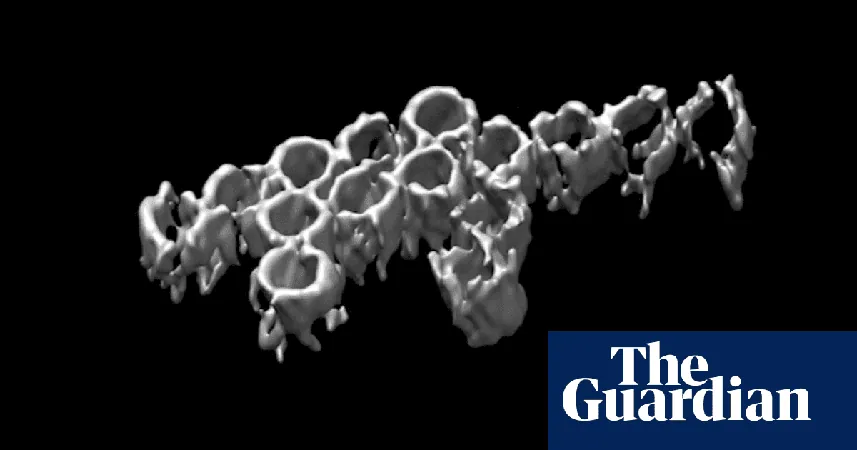
Australian Researchers Create Nano-scale Dinosaur Using DNA Building Blocks – Here’s What It Means for the Future!
2024-11-27
Author: Jia
Australian Researchers Create Nano-scale Dinosaur Using DNA Building Blocks – Here’s What It Means for the Future!
Australian scientists have made an extraordinary leap in nanotechnology by harnessing DNA as a building material to construct minuscule objects, including an incredibly tiny dinosaur. This breakthrough, achieved by researchers at the University of Sydney Nano Institute, has opened up thrilling new avenues in the field of nanobot technology, with potential applications ranging from medicine to advanced electronics.
This remarkable method transforms DNA into modular components capable of forming nanostructures that are thousands of times thinner than a human hair. The findings, which were recently published in the esteemed journal Science Robotics, showcase the impressive versatility of DNA and its ability to be engineered beyond its traditional biological boundaries.
As a demonstration of their technique, the research team created over 50 unique nanostructures, including a dragon, a dinosaur, and even a minuscule representation of Australia measuring a mere 150 nanometres across (for context, a nanometre is one millionth of a millimetre). Dr. Shelley Wickham, a key contributor to the study, expressed her excitement over the dinosaur model, highlighting its intricate design that required precise engineering rather than mere chance assembly.
Professor Arnan Mitchell, director of micro and nano research at RMIT and an observer of this groundbreaking work, noted the innovative use of DNA in this research as a mechanical construct rather than just a chemical component. This insight is pivotal, he explained, as it paves the way for structuring DNA into tools for cutting-edge drug delivery systems.
Imagine DNA wrapped around a medication, safeguarding it as it navigates through the bloodstream to the targeted area. With the right conditions—such as exposure to light or heat—this "packaging" could then open up to release the drug exactly where it’s needed, revolutionizing how we approach treatment in the future.
With further advancements, the methodologies developed by Wickham and her team could lead to new robotic components designed for precise drug delivery and innovative smart materials that adapt to environmental changes. “We’re on the brink of picturing a world where sophisticated nanobots tackle a wide array of tasks, from health applications to building the next generation of electronic devices,” she stated.
The intricate process begins with the creation of 3D building blocks known as "voxels." By using DNA extracted from bacteriophages and employing a folding technique called DNA origami, researchers craft these voxels into cylindrical forms bound together by synthetic DNA, much like a sophisticated jigsaw puzzle.
Wickham elaborates that the self-assembly of these voxels relies on strategically sequenced DNA that binds at predefined locations, functioning like specialized Velcro or glue. By introducing 300 unique DNA sequences—akin to specialized bonding agents—the researchers can ensure the parts connect accurately, assembling the complex structures observed under an electron microscope.
"The results remind me of Meccano," Wickham says, drawing a parallel to the nostalgic engineering toy, "We spent significant time designing these models on computers, only for the DNA to spontaneously come together in perfect form."
As scientists continue to explore the potential of DNA as a tool for nanotechnology, the implications of this research appear boundless—potentially ushering in a new era of miniaturized technologies that can influence many aspects of our lives. This is just the beginning; could nano-scale innovations change healthcare, robotics, and beyond? The future looks promising!
 Brasil (PT)
Brasil (PT)
 Canada (EN)
Canada (EN)
 Chile (ES)
Chile (ES)
 España (ES)
España (ES)
 France (FR)
France (FR)
 Hong Kong (EN)
Hong Kong (EN)
 Italia (IT)
Italia (IT)
 日本 (JA)
日本 (JA)
 Magyarország (HU)
Magyarország (HU)
 Norge (NO)
Norge (NO)
 Polska (PL)
Polska (PL)
 Schweiz (DE)
Schweiz (DE)
 Singapore (EN)
Singapore (EN)
 Sverige (SV)
Sverige (SV)
 Suomi (FI)
Suomi (FI)
 Türkiye (TR)
Türkiye (TR)